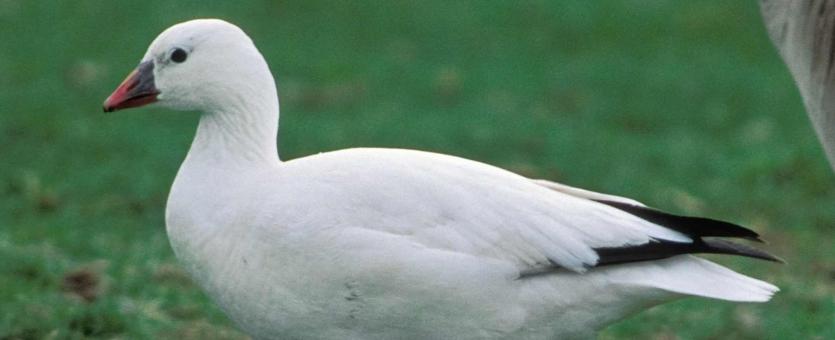
Ross’s goose looks a lot like the snow goose and, like that species, has a white and a “blue” color pattern (morph). Like the snow goose, the white form of Ross’s goose is all white with dark primaries and gray primary coverts. The key to telling the two species apart is body size and bill shape and color. Ross’s goose is the size of a mallard and has a short neck and rounded head; the pink bill is stubby and lacks the black “lipstick” or “grinning” patch. On close inspection, a blue-green warty patch saddles the upper bill near the base. The “blue goose” or dark morph is very rare. The voice is a high-pitched honking sound, similar to the snow goose’s but higher and not as shrill.
Similar species: The snow goose, discussed above. Note also that hybrids between snow goose and Ross’s goose are not rare.
Length: 23 inches (tip of bill to tip of tail).
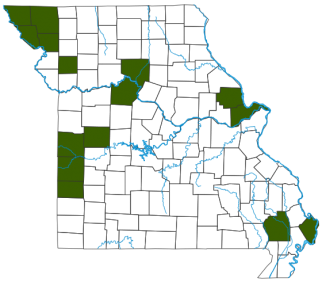
Statewide.
Habitat and Conservation
Usually observed among groups of snow geese. Occurs in marshes, sloughs, ponds, lakes, and reservoirs with aquatic vegetation. Also forages in crop fields. More frequently seen in northwestern Missouri, although most large goose flocks anywhere in the state often have a few Ross’s geese present.
Food
Ross’s geese forage in marshes, rivers, lakes, and crop fields, including cornfields and new winter wheat fields, for grains, roots, grasses, and aquatic vegetation.
Status
Uncommon migrant. As winter resident, uncommon (west) to rare (east). Ross’s goose is a gamebird in Missouri. Populations of Ross’s and snow geese have increased to a historically high level. As a result, they are overgrazing their arctic nesting range and degrading large areas of the tundra where other species nest. Wildlife agencies have been trying to control the population size through various methods.
Life Cycle
Ross’s geese overwinter in the southern part of their range, including (uncommonly) Missouri, and return north in spring to the arctic tundra to breed. There, they make simple scrapes on the ground and typically lay 2 to 6 eggs.
Human Connections
As migrating geese fly overhead, they reassure us of the certainty of changing seasons. As the great conservationist Aldo Leopold wrote, “One swallow does not make a summer, but one skein of geese, cleaving the murk of a March thaw, is the spring.”
Ecosystem Connections
As adults, and even more so as goslings and as eggs, geese are preyed on by a variety of predators. They influence the plant and animal communities in both summer and winter territories, and as they migrate, they play a role in every ecosystem they travel through.
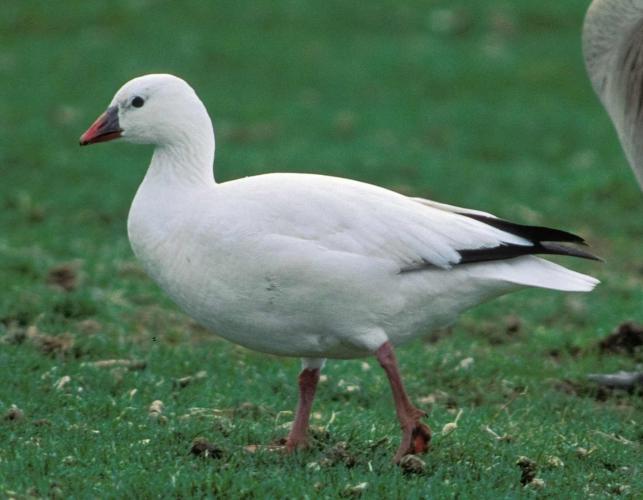
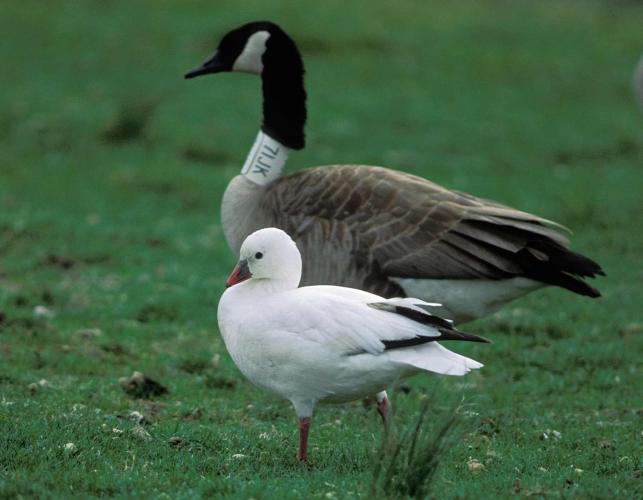




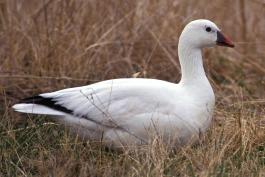
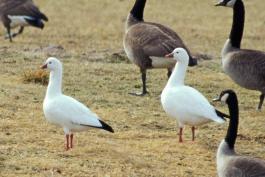
About 350 species of birds are likely to be seen in Missouri, though nearly 400 have been recorded within our borders. Most people know a bird when they see one — it has feathers, wings, and a bill. Birds are warm-blooded, and most species can fly. Many migrate hundreds or thousands of miles. Birds lay hard-shelled eggs (often in a nest), and the parents care for the young. Many communicate with songs and calls.





















